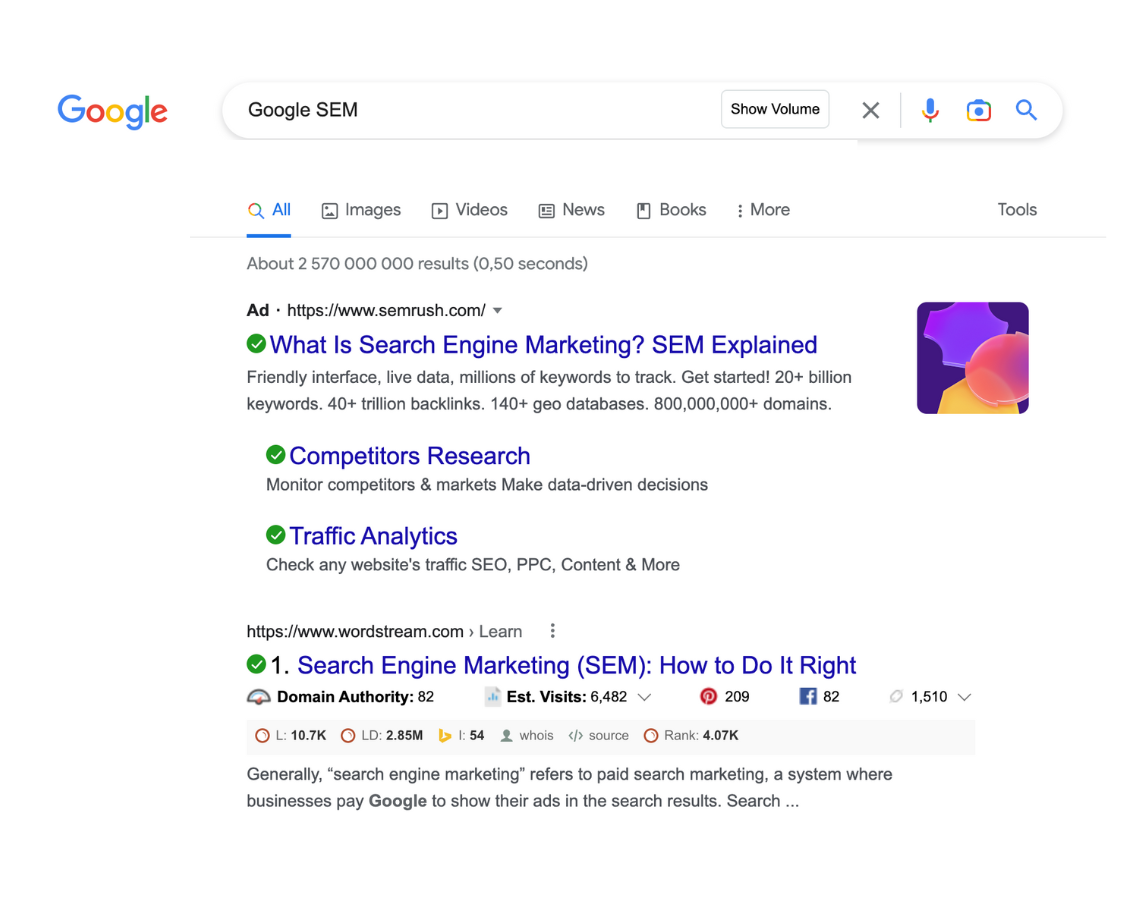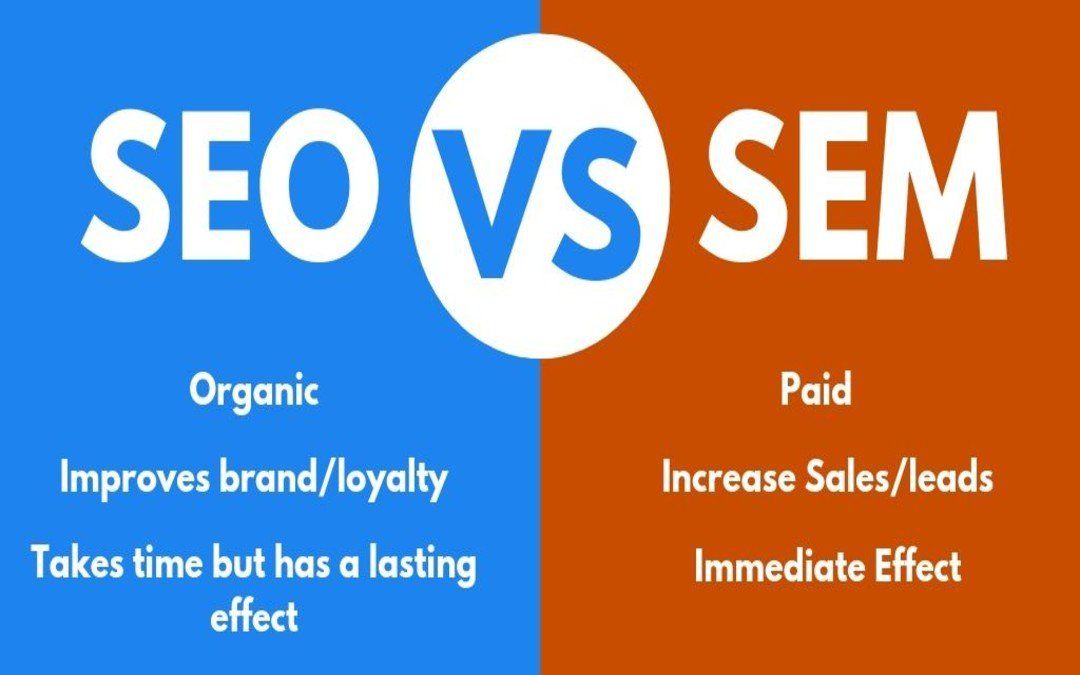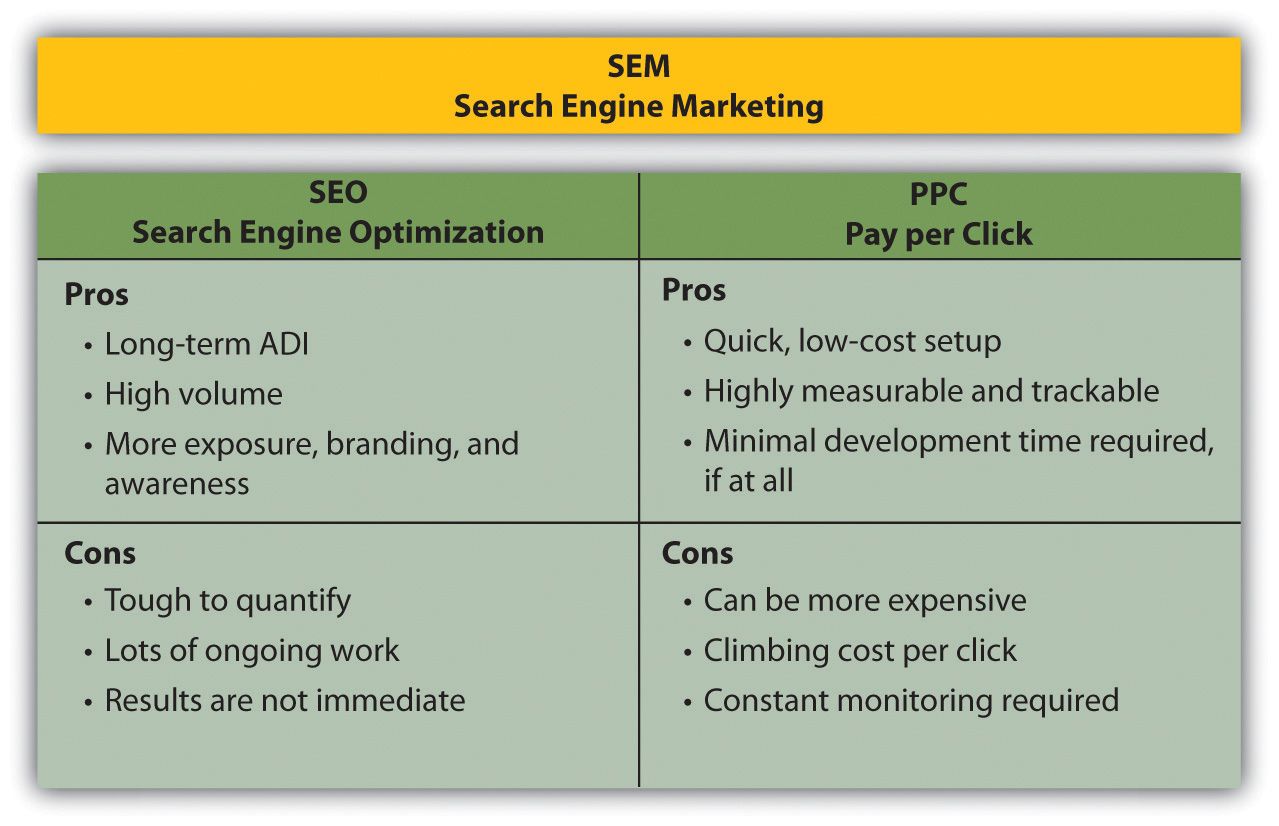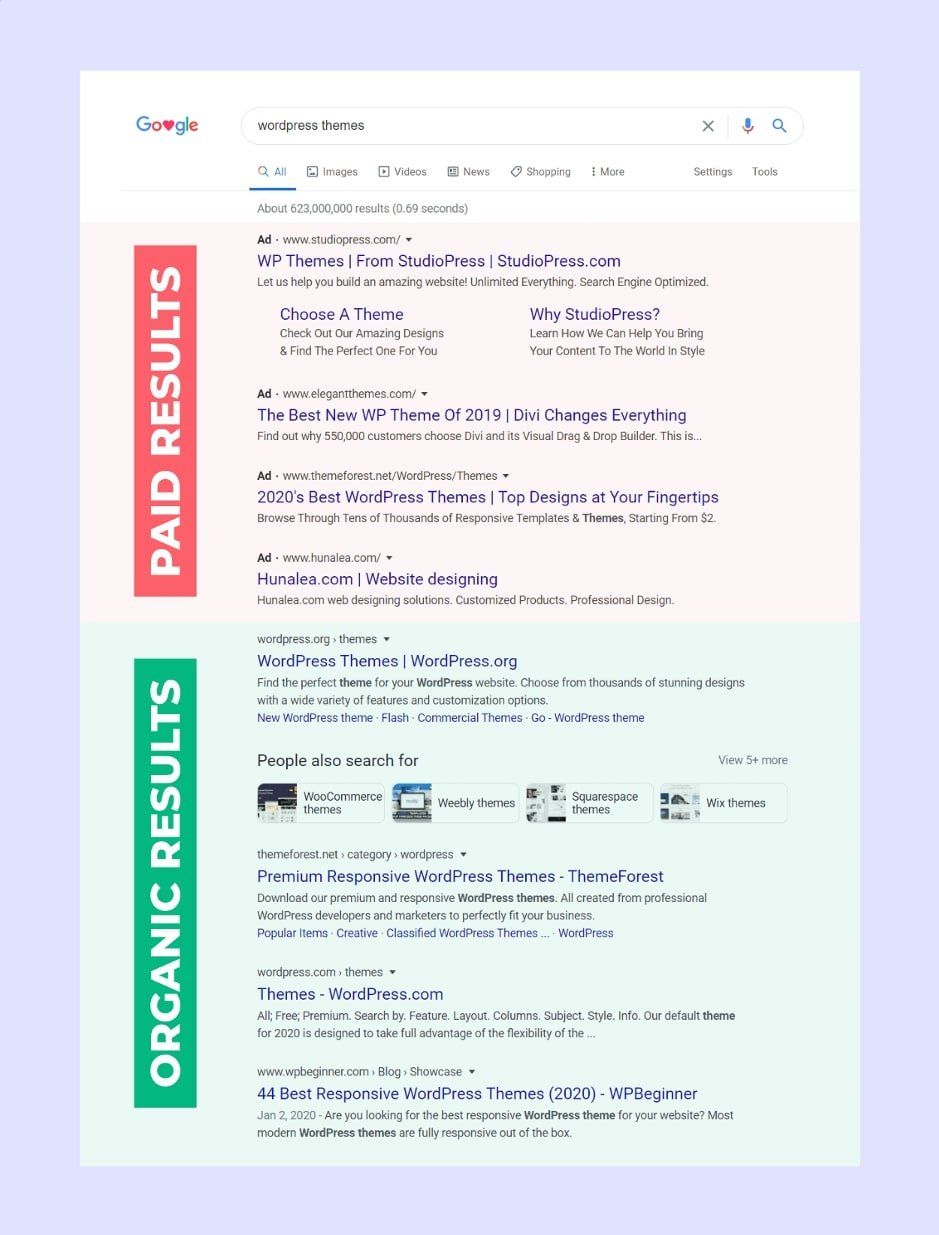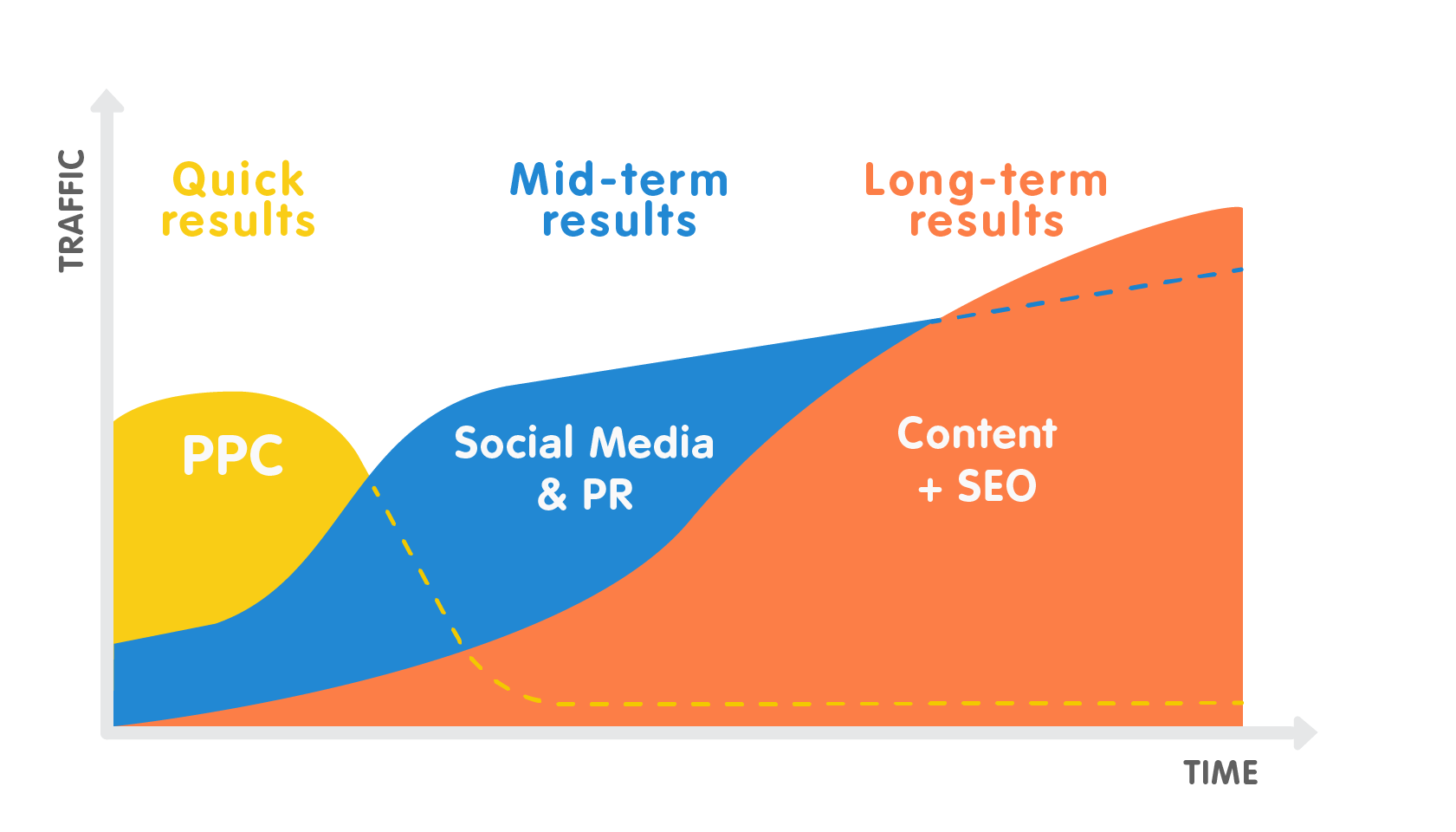SEO vs SEM : What are the differences?
The Pros and Cons of SEO and SEM: Which is the best choice for your business
Search engine optimization (SEO) and search engine marketing (SEM) are two powerful digital marketing strategies that can help businesses reach their target audience and increase online visibility. Both techniques can drive traffic to your website and boost sales, but they each have their own unique advantages and disadvantages. In this article, we will explore the pros and cons of SEO and SEM, and help you decide which is the best choice for your business.
Search engine optimization (SEO)
SEO is the process of improving the quality and quantity of website traffic by increasing the visibility of a website or a web page in a search engine's organic results. It involves optimizing various elements of a website such as the content, meta tags, and backlinks, to make it more attractive to search engines and to rank higher in search results.
How does SEO work?
Search engine optimization (SEO) is different from SEM. SEO is the process of improving the quality and quantity of website traffic by increasing the visibility of a website or a web page in a search engine's unpaid results. SEO is a crucial aspect of digital marketing because it helps businesses to be found by potential customers searching for products or services that they offer.
The first step in SEO is to conduct keyword research. This process involves identifying the words and phrases that people are using to find products or services like yours. Once you have a list of keywords, you can use them to optimize your website's content and meta tags. This includes adding the keywords to your website's title, headings, and meta descriptions, as well as including them throughout the body of your content.
Another important aspect of SEO is building backlinks. Backlinks are links from other websites that point to your website. Search engines use backlinks as a way to measure the popularity and authority of a website. The more backlinks a website has, the more likely it is to rank well in search engine results. To build backlinks, you can reach out to other websites and ask them to link to your site, or you can create high-quality content that other websites will naturally want to link to.
On-page optimization is another important aspect of SEO. This includes making sure that your website is easy to navigate and that it loads quickly. Search engines also take into account the overall design and user experience of a website, so it's important to make sure that your website is visually appealing and easy to use.
Finally, tracking and analyzing your website's performance is crucial for SEO. By tracking your website's rankings, traffic, and conversion rates, you can make informed decisions about how to improve your website's visibility. You can use tools like Google Analytics and Google Search Console to track your website's performance and make data-driven decisions about how to improve your SEO.
In conclusion, SEO is a complex and ever-evolving process that requires a combination of technical skills, creativity and patience. It's an ongoing process which requires regular maintenance and attention. By following the best practices outlined above, you can improve your website's visibility and attract more potential customers to your business.
Disadvantages of SEO
- Cost-effective: SEO is a cost-effective way of driving traffic to a website as it doesn't require any monetary investment.
- Long-term benefits: SEO efforts usually have long-term benefits, which means that once a website is optimized, it will continue to rank well in search engine results over time.
- Credibility: Websites that appear on the first page of search engine results are considered more credible and trustworthy than those that appear on later pages.
- Targeting the right audience: SEO allows you to target the right audience by using relevant keywords, which means that the traffic driven to a website is more likely to convert into customers.
- Brand awareness: SEO helps in building brand awareness as when people search for a particular keyword, they are more likely to come across a website that ranks well for that keyword.
Advantages of SEO
- Time-consuming: SEO is a time-consuming process and it can take several months for a website to start ranking well in search engine results.
- Constant updates: SEO is an ongoing process, and it requires constant updates to keep a website ranking well in search engine results.
- No guaranteed results: SEO does not guarantee that a website will rank well in search engine results, as there are many factors that can affect a website's ranking.
- Limited control: SEO does not give you much control over the specific keywords that you want to rank for, as the search engine algorithms dictate which keywords a website will rank for.
- Risk of penalties: If a website uses black hat SEO tactics, it can be penalized by search engines, which can result in a loss of traffic and revenue.
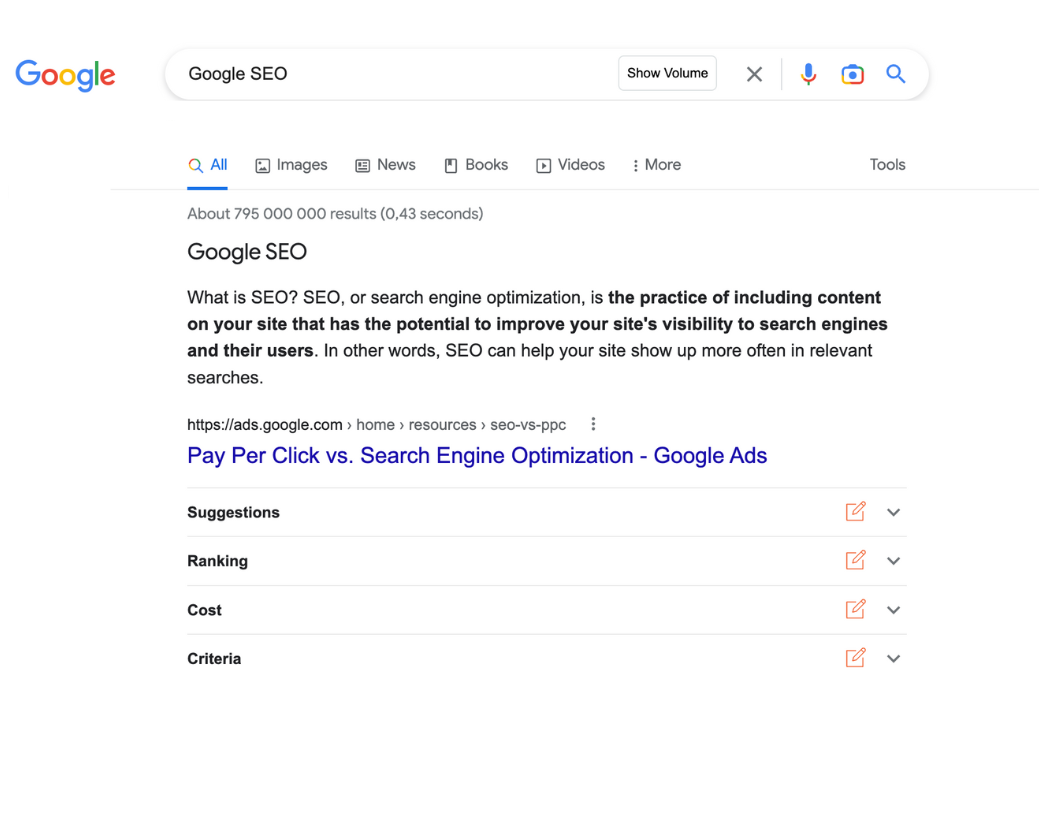
Search engine marketing (SEM)
SEM, on the other hand, is the process of buying traffic through paid advertising on search engines. It involves creating and running ad campaigns on search engines, such as Google AdWords and Bing Ads, to increase a website's visibility in search engine results pages (SERPs).
How does SEM work?
Search Engine Marketing (SEM) is a type of digital marketing that involves the promotion of websites by increasing their visibility in search engine results pages (SERPs) through paid advertising.
SEM works by purchasing ads on search engines, such as Google and Bing, and placing them at the top of the SERPs for specific keywords. These ads, known as pay-per-click (PPC) ads, are purchased through an auction system, where advertisers bid on keywords related to their products or services. The highest bidder is then placed at the top of the SERP, while the second highest bidder is placed second, and so on.
One of the main benefits of SEM is that it can drive highly targeted traffic to a website. Since the ads are placed at the top of the SERPs, they are more likely to be seen by users searching for specific products or services. Additionally, since the ads are targeted to specific keywords, they are more likely to be seen by users who are already interested in the products or services being advertised.
Another benefit of SEM is that it can be a cost-effective way to drive traffic to a website. Unlike other forms of advertising, such as television or print ads, which can be expensive and difficult to measure, SEM allows advertisers to set a budget and track their ROI. Advertisers can also adjust their bids and targeting options to ensure that they are getting the most out of their budget.
To get started with SEM, advertisers will need to set up an account with a search engine such as Google Ads or Bing Ads. Once the account is set up, advertisers can create ads and target them to specific keywords and demographics. They can also set a budget and track the performance of their ads in real-time.
In conclusion, SEM is a powerful digital marketing tool that can help drive targeted traffic to a website and provide a cost-effective way to reach potential customers. By setting up an account with a search engine and creating targeted ads, advertisers can increase their visibility in the SERPs and attract more customers to their website.
Disadvantages of SEM
- Cost: SEM can be expensive, especially for competitive keywords and industries.
- Time-consuming: Managing and optimizing a SEM campaign takes a lot of time and effort.
- Learning curve: It can take time to learn how to effectively use SEM tools and strategies.
- Dependence on keywords: SEM success depends heavily on choosing the right keywords, which can be difficult to predict.
- Constant monitoring and adjustment: SEM requires ongoing monitoring and adjustments to stay effective.
Advantages of SEM
- Immediate results: SEM can produce immediate results, as ad campaigns can be launched and start driving traffic to a website almost immediately.
- Targeted traffic: SEM allows you to target specific keywords and demographics, which means that the traffic driven to a website is more likely to convert into customers.
- Greater control: SEM gives you greater control over the specific keywords that you want to target, and you can adjust your ad campaigns accordingly.
- Measurable results: SEM allows you to track the performance of your ad campaigns, which means that you can see which campaigns are working and which are not.
- Brand awareness: SEM helps in building brand awareness as when people search for a particular keyword, they are more likely to come across an ad that is related to that keyword.
